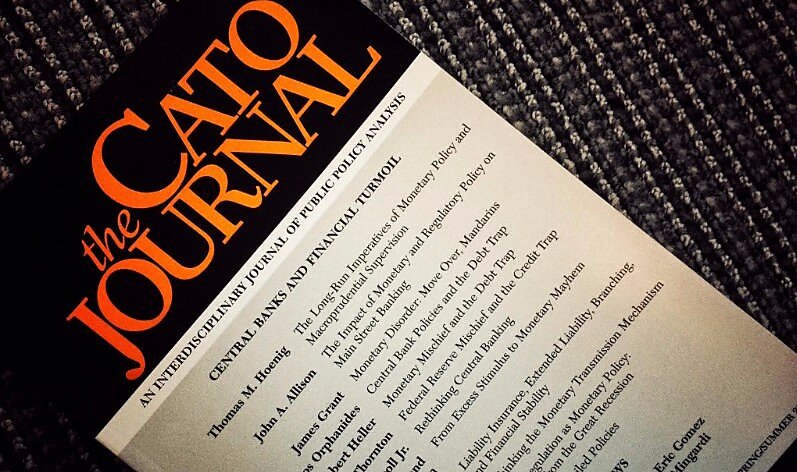In his editor’s note, Jim Dorn summarizes the general damage done by post-crisis monetary policy as well as the particular issues explored within the CJ’s covers, writing:
The Fed’s unconventional monetary policies have distorted interest rates and asset prices, misallocated credit, encouraged risk taking, increased leverage, penalized savers, and increased uncertainty…the contributors to this volume confront the uncharted waters of unconventional policies and offer valuable insights about how to move toward a transparent and robust monetary system.
The papers by retired BB&T CEO John Allison and FDIC Vice Chair Thomas Hoenig offer contrasting perspectives on the failures of post-crisis macroprudential regulation. Hoenig argues that regulation must be detached from short term economic objectives. Allison questions the ability of regulators to improve financial stability at all. Distinguished former central bankers Robert Heller, Athanasios Orphanides, and Daniel Thornton each claim that government debt and projected future deficits will weigh on the Fed’s interest rate policymaking decisions. Jerry Jordan explains how the buildup of excess reserves challenges the textbook understanding of monetary transmission, while Steve Hanke and Matt Sekerke examine the relation between bank regulation and broad money growth, showing that post-crisis monetary policy has been “tight” rather than “accommodative.”
Read these and more articles in the online Spring/Summer 2017 Cato Journal here. Or order a hard copy here. Wish you’d attended the conference? Watch the video and check out a detailed summary here.


